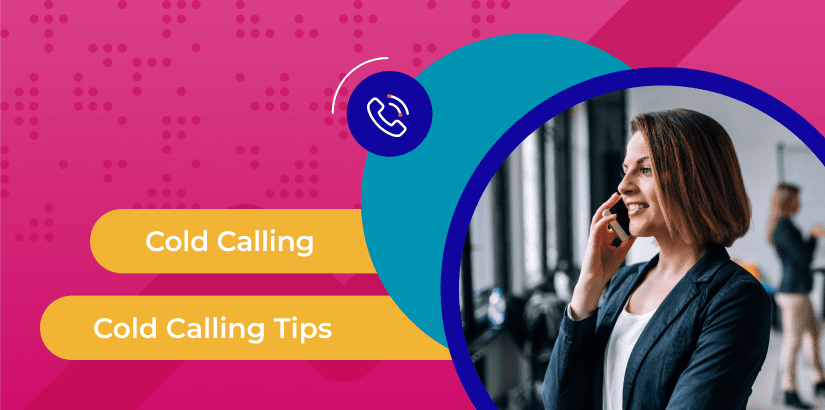Let’s not beat around the bush: nobody likes getting cold calls.
Buyers are already short on time, and the last thing they want is to listen to another sales pitch.
As sellers, you’re even more in the hot seat. Research from our 2023 State of Sales Productivity Report found that during a call, buyers asked an average of 18 questions, a significant increase from 13 questions in the 2022 report. This means customers are scrutinizing purchases more and are even more reluctant to take a cold call.
Because many selling orgs maintain call quotas for their sales reps to achieve on a monthly or quarterly basis, sellers need tips on how to make these calls less cringe-worthy and more effective at getting that meeting booked.
Here are our tips for both sellers and sales enablement leaders on how to make your sellers amazing cold callers.
First things first: Is cold calling legal?
Yes, cold calling is generally legal, although specific regulations may vary depending on the country and jurisdiction. In many places, cold calling is allowed as long as it complies with certain rules and guidelines. For example, businesses may need to adhere to laws governing telemarketing practices, such as obtaining prior consent from recipients or respecting “Do Not Call” registries.
It’s critical for organizations to familiarize themselves with the relevant laws and regulations in their region to ensure compliance and maintain ethical business practices. Seeking legal advice or consulting industry-specific guidelines can help businesses navigate the legal landscape surrounding cold calling.
8 tips to nail your next cold call
Use these tips to warm up your cold calls and have more engaging and impactful conversations.
#1. Do your research
Do you actually know who you’re calling? No, we don’t mean their title, company, and industry — while this is important, to really engage the buyer, you must understand their pain points and business needs. The more information you have, the better you can gauge their level of interest and engage them with relevant messaging right off the bat. The following are some of the most effective methods for research:
- Google Trends and Google Keyword Planner are keyword research tools that provide insight into what questions buyers are asking, what pain points they’re searching for, and what other brands are ranking for those keywords.
- Posts on LinkedIn profiles and company pages can reveal what topics and challenges are most important to the buyer and their company/industry.
- Search engines and social profiles provide insights into any events the company sponsored or attended, funding and other corporate milestones, and more.
- Account intelligence tools like 6sense or UpLead dig even deeper to match online behaviors to certain IPs so you can identify a specific buyer’s activities and tailor your conversation based on them.
You may also find that the company isn’t a great fit for your product. In this case, you can cross them off your list and avoid wasting time for both parties.
Prioritize sales training that focuses on understanding buyer pain points and business needs for effective engagement.
Use keyword research, LinkedIn posts, search engines, social profiles, and account intelligence tools to gather relevant information.
#2. Don’t start with a sales pitch
In addition to knowing details about the person you’re calling, stand out from other vendors with a more conversational approach. Buyers are expecting a generic, robotic sales pitch — surprise them by aligning the value proposition to the research you’ve done. If your organization has a cold call script or template, try not to read directly from it — you’ll sound over-rehearsed as a result. Instead, use the script as a guide for staying focused and keeping the discussion on track.
Use a conversation intelligence tool to listen to calls to understand if sellers are immediately bombarding buyers with a sales pitch. Assign training to help them improve.
If you sound like you’re reading from a script that pitches your product, your call will likely end sooner than you’d like. Simply use the script as a guide for the conversation to keep it on track.
#3 Keep things brief
Make sure you’re not disengaging the person from the outset by delivering a monologue about yourself and your company. Research from the 2023 State of Sales Productivity Report found that the average longest monologue delivered by reps is 2 minutes 43 seconds. The longest monologues happen when the rep either talks through a ton of content or provides a nervous response to a customer question that they were ill-prepared to handle. Talking in short snippets during cold calls is important to maintain engagement, convey key points efficiently, and avoid overwhelming the buyer with information.
Coach sellers on the art of orchestrating conversations rather than making presentations.
Don’t overwhelm the buyer by rapid-firing a monologue at them from the outset. Speak 1-2 sentences and then listen.
#4. Prove your value
You could talk all day about how effective your product is, but showing what your current customers have to say provides much more legitimate evidence of the value you can bring to the prospect. Share proof of the value of your company and products with the buyer, including first-hand customer testimonials and reviews on rating sites like G2. Awards and other professional recognition can also be testaments to how your organization serves its employees and customer base.
You can get valuable voice of the customer insights from a sales productivity tool. Infuse those learnings into your sales training so sellers can quickly and naturally mention those anecdotes during cold calls.
Real-life examples from customers tell the story better than you can. Make sure you have a few customer stories in your back pocket for every use case.
#5 Practice active listening
Just because you did some research upfront doesn’t mean you know everything about the buyer. In your first conversation with them, your focus should be on learning as much as you can about the team, company, industry, competitive landscape, existing tech stack, and more. This is a win-win: you get deeper, first-hand insights into this potential customer, and the buyer will appreciate you taking the time to understand the issues they’re facing and answer questions meaningfully.
Incorporate role-plays into your sales training program so sellers can practice cold-calling scenarios and get feedback about how well they’ve listened.
You’re there to learn. Give buyers the opportunity to talk about their pain points and make listening your main focus during cold calls.
#6 Find the best calling schedule
Don’t take advantage of a buyer’s time and be considerate about when you’re calling. They are likely tackling a long to-do list, and you will only irritate them if you call when they’re bogged down with meetings and other work. Calling closer to lunch or the end of the day, when people are preparing for a break, has a higher likelihood of success. Research shows that calls are most likely to be answered between 10 and 11am and 4 and 5pm. Remember, not everyone you call is in the same time zone, so be mindful of that before you dial.
Ask reps for feedback as part of your sales training program. If some reps have more success during a certain time of day, share that learning with the rest of your team.
Respect a buyer’s time by calling strategically only during optimal hours.
#7 Leave an impactful voicemail
Voicemails are tough. We know that only 11% of voicemails lead to a return call. Rather than giving up hopes of engaging the person on the other hand, leave them a message that will grab their attention. Demonstrate what you know about the individual, their company, their pain points, and how your solution can help. Avoid cramming too much information into the voicemail — keep it at a tight 20 seconds at most. Convey some energy and urgency and follow up within a week if you don’t hear back.
Use coaching sessions as an opportunity to coach sellers on how to leave an effective voicemail.
Leave attention-grabbing voicemails demonstrating knowledge, energy, and urgency. Follow up.
#8 Set proper next steps
You’re not closing any deals on the first call, so it’s important to establish clear steps agreed upon by both parties. These could include sending over additional resources, setting up a demo, or waiting a few months before touching base again. Rather than forcing them into your sales process, let the prospect bring you into their timeline and be respectful of how they would like to move forward. If they say they aren’t interested or ready, give them an appropriate amount of time before calling them again.
Coach sellers on how to create urgency with buyers so these cold calls lead to the next step.
Trust and listen to buyer’s process.
Other ways to reach prospects besides cold calling
Changing up your outreach methods helps relationship-building and engages buyers in a way that suits their preferences. Here are a few common ways to connect with buyers that don’t require picking up the phone:
Email marketing
Social media
Trade shows
Direct mail
Email marketing
Send your prospects personalized content that addresses their specific pain points. Make sure to use a combo of automated and personalized outreach but always ensure you’re sharing content that’s relevant to the buyer’s persona and pain points.
Social media engagement
Use LinkedIn, Twitter, and other social networks to connect with buyers. This is also a place where you can show off your creativity and personalize your outreach. Like email outreach, make sure you’re sharing content or ideas that engage your buyer. Groups and discussion forums are also a great way to position yourself as a thought leader without coming across as “too salsey.”
Networking events and conferences
In-person events might seem like an obvious one but it’s true: Take advantage of industry-specific events, conferences, and trade shows to meet buyers face-to-face. Meeting buyers in person allows for more meaningful connections and gives you a chance to show off your products or services.
Personalized direct mail
While direct mail might have fallen out of style as an engaging outreach tactic, it’s made a comeback. A carefully crafted, physical piece of mail can stand out in a digital world and leave a lasting impression.
How else are you building pipeline?
Cold calling isn't the only way your sellers should be building pipeline. Here's our complete guide.
Get the GuideThis post was originally published in June 2023 and was updated in December 2023.



 By Kevin Atkinson
By Kevin Atkinson


